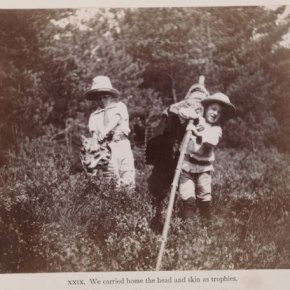
Marion Post Wolcott Captures Humanity During the Great Depression
by Jamal Stone Broad Street looks back at the amazing catalogue of photography left behind by Marion Post Wolcott, who passed away twenty-four years ago this week. Wolcott’s legacy is tethered to the work of the Farm Security Administration, a Rooseveltian program meant to collectivize rural farmers in order to help them survive the Great Depression....

The Real People Behind Characters
It’s common literary practice to use the people around you as inspiration for fictional characters. Sometimes, truth can be more interesting than fiction, and, as writers, we come across people who give us inspiration for a story to tell. These truths might mean more than what one can think up from scratch. Many authors have used the facts of the...

The Language of Grief
On the occasion of Pacific Northwest writer Charles D’Ambrosio’s new book of essays, Loitering, slated for November release from Tin House, we’re recommending “Documents,” a piece D’Ambrosio contributed to The New Yorker in 2002, and which is included in Loitering. The essay, a delicate yet devastating memoir in fragments, is partially composed of passages culled...

Claudia Roth Pierpont on Nina Simone
This week we recommend Claudia Roth Pierpont’s thoughts on the life of Nina Simone, “A Raised Voice,“ over at the currently open archives of The New Yorker. As Roth Pierpont observes, controversy broke out earlier this year over the announcement of the selection of Zoe Saldana, “a movie star of Dominican descent and a light-skinned beauty along...

How to Kill a Vampire
Just in time for Halloween, making rounds on the internet again are pictures and videos of 19th-century vampire-hunting kits, boxes packed tight with everything you’d need to kill vampires. Most people who have them acknowledge that their collections are replicas, but some people are sure that they’ve got the real deal. Are these kits part of a...








